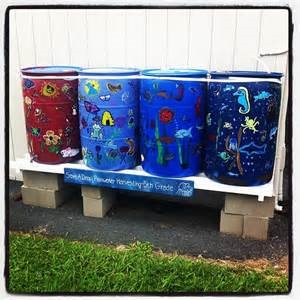It’s raining. Again. According to the Old Farmer’s Almanac and AccuWeather, the theme of

SOURCE: weather4kids.wikispaces.com
Summer 2016 is above normal rainfall and heat. The rain will enable crops and gardens to flourish but it will also bring flooding and provide opportunities for many batches of mosquitoes. Putting this free resource to work for you can accentuate the positive and at least minimize the negative.
Rain harvesting is a time-honored practicality that, in our (sub)urban world can lessen the drain on aquifers, prevent runoff with its pollutants from entering lakes and streams, and save energy. Since WSSC raised their rates on July 1, rain harvesting also could be a significant cost-saver for those with heavy outside water needs during the summer. Because, although this summer is slated to be a wet one, you really can’t schedule car washes by AccuWeather – or can you…
An earlier post here gave an overview of rain barrels, one of the most basic ways to harvest rain. Of course things have progressed far past a barrel and a lid. Today’s rain harvest receptacles are decidedly unbarrel-like and come in a variety of materials, shapes, and levels of complexity.
Anatomy of a Rain Barrel System
The first consideration is the type of roof and gutter that are capturing the rain. Roofing materials may contain toxins that would steep in standing water. Mother Earth News says that the ideal roof is an “uncoated stainless steel or factory-enameled galvanized steel with a baked-enamel, certified lead-free finish.” If you have the space, a small building devoted to rain harvesting can be built. It should stand clear of overhanging trees to avoid foliage debris. This is a good idea for rain barrels connected to your house gutters too.
Barrels can be repurposed from beverage or food manufacturers, farms, at garage sales and auctions, and in salvage yards. State and local governments also offer free or low-cost barrels. Thoroughly wash in soapy water then rinse well. Or simply purchase a plain or fancy receptacle made for the purpose of rain harvesting.
Place in line with the downspout of a gutter system. A pipe diverts the water into the barrel and, when the barrel is full, water is allowed to go on its original course, down the spout and out into the splash block. A lid keeps out pollutants and insects – an especially vital function as mosquitos look for standing water to lay their eggs. And near the bottom of the container is a spigot to which a hose can be attached for easy watering or transference to pails.
Depending on the volume of rainfall, you may want to have more than one barrel linked, like this colorful set in this photo courtesy of Flickr.com.

You’ll need to determine how much rain comes down your gutter and how much you wish to capture. Gardeners.com offers a Rainfall Harvest Calculator to help out:
[Roof Length] x [Roof Width] + [Rainfall (in inches)]
Finally – or first off, because you do not want to attempt moving even a partly filled receptacle – placing the container(s) on a short stand uses gravity to dispense the water.
To Filter Or Not to Filter
The need for filtration systems depends on how the harvested rain will be used. For car washing, plant watering, or toilet flushing minimal filtering is needed, especially if your gutter has a guard that prevents leaves and debris from landing in it.
But rain harvested for potable use requires filtration. Here’s where things get costly in terms of set-up and materials. Water can be treated for potable use by using
Chloride Ozone Iodine UV light
But, a simple time-honored method involves layering stones, charcoal, sand and gravel in the barrel. What comes out of the spigot is clean drinking water.
Mosquito Prevention
Even though it may look pretty to have water cascading a short distance into the receptacle, it’s better to have a truly water-tight system. Ensure there are no leaks around the diverter or spigot or under the receptacle stand. Water that flows out of the downspout should do so in a way that prevents standing water. Lady Mosquito can set up her nursery in as little as an ounce of water; a wide and deep receptacle of water would make her so very happy – if insects actually have feelings…
A mosquito nursery can be avoided by stronger means – use of mosquito dunks – discs containing a bacteria, Bacillus thuringiensis israelensis (Bti). This is only for water intended for non-food use. Some will use vegetable oil to form a surface barrier which deprives larvae of oxygen. Goldfish or minnows, which love noshing on larvae, can also be found in rain barrels. More on mosquito prevention can be read here.
Rain Garden
Depending on the layout of your yard you can bypass the storage step and water your garden directly by creating a rain garden. According to the USDA, rain runoff – rain that can’t be absorbed by the earth because of it falls on artificial surfaces like roads and lots – is swept into streams and lakes, carrying pollutants. Runoff also increases the potential for flooding.
But, as explained in an excellent article from Mother Earth News, soil’s ability to hold water is pretty remarkable. It explains: “When it rains or when we irrigate, gravity pulls the water down into the soil. After a heavy rain, some of the water may move all the way down to the water table or the bedrock, but a large amount of it is held by capillary forces that cause water to coat each soil particle and partially fill the spaces between particles. (An example of capillary action is the way a paper towel absorbs liquid.) That capillary water is what your crops use as they grow.” For each foot of soil, 3 or more inches of water can be held, especially in gardens containing organic matter. Depending on your garden plot then, a lot of rainfall can be a huge boost to growing your garden green with minimal effort on your part.
Rain gardens are shallow depressions positioned near a runoff source like a downspout, driveway or sump pump. A garden can be comprised of trees, shrubs, perennials, or ground cover. If the garden cannot be placed close to the harvest site, it can be piped a (short) distance and the water delivered through a perforated hose exactly where it can be put to good use. The garden is situated on a level lower than the drain.

SOURCE: Rain Garden. Wikipedia.
Whether you’re washing the car, watering your greenery, or storing potable water as part of your disaster preparedness planning, there are many benefits to harvesting what will be falling so generously from the skies this summer.
RESOURCES (Accessed 16 Jul 16)
A Better Rainwater Harvest – Rain Gardens. Long C. Mother Earth News. 2012
Filtering Rainwater in a Barrel. Holliday L. Mother Earth News. 2013
Greening your Landscape – Rain Barrels. Maryland Department of Natural Resources.
Rain Barrels of Savings. Saxe J. EPA Blog. May 21, 2015
Rain Gardens Around Maryland. Worcester County, Maryland.
Rain Gardens – Absorb Water, Reduce Runoff, Prevent Flooding. National Resources Conservation Service. United States Department of Agriculture. 2005
Rain Garden Design Templates. Low Impact Development Center. National Fish and Wildlife Foundation.
ABOUT THE AUTHOR
Roxanne Corbin has lived most of her life in the mid-Atlantic. She is a latent artist and wistful-thinking gardener. An information hunter by trade, Roxanne is currently working to transition from the corporate world to managing a research and writing business of her own.
amzn_assoc_placement = “adunit0”;
amzn_assoc_search_bar = “false”;
amzn_assoc_tracking_id = “trybackfarm-20”;
amzn_assoc_ad_mode = “search”;
amzn_assoc_ad_type = “smart”;
amzn_assoc_marketplace = “amazon”;
amzn_assoc_region = “US”;
amzn_assoc_title = “Items you may enjoy”;
amzn_assoc_default_search_phrase = “rain barrels”;
amzn_assoc_default_category = “All”;
amzn_assoc_linkid = “7a8bd5a27e2e774aba4813ab8726761a”;
amzn_assoc_rows = “2”;
Check out these products as well!
